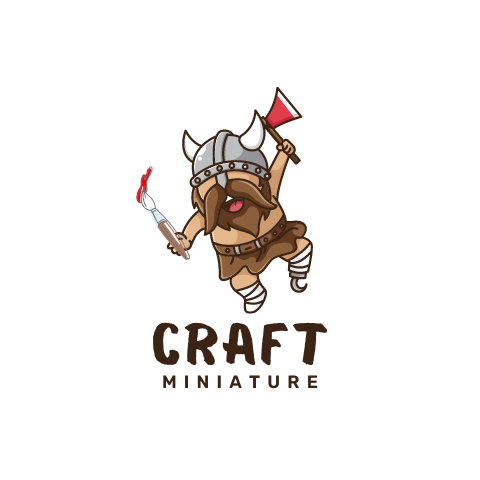Miniature paints are used to paint small objects, usually models or figurines. There are many different types of miniature paints, but they all share the same essential ingredients.
The three main ingredients in all paints are a pigment, a binder, and a solvent. The type of pigment used will determine the colour of the paint. The binder holds the pigment together and gives the paint its body. The solvent is used to thin the paint and make it easier to apply.
This article will discuss the different types of miniature paints and how they are made. Read on to learn more about the paints we all love using on our models.

What are miniature paints?
As the name suggests, miniature paints are used to paint small objects. These can be anything from models and figurines to dolls and action figures. The main difference between regular and miniature paints is the size of the pigments used.
Miniature paints contain much smaller pigments than regular paints. This gives them several advantages. The small pigments make getting a smooth, even coat of paint easier on your model. They also allow you to achieve finer details and produce brighter colours.
What are they used for?
Miniature paints are most commonly used to paint models and figurines. However, they can also be used to paint other small objects such as dolls and action figures.
The three main ingredients in all paints
All paints have three components a pigment, a binder, and a solvent. The type of pigment used will determine the colour of the paint. The binder holds the pigment together and gives the paint its body. The solvent is used to thin the paint and make it easier to apply.
Many different types of pigments can be used in paint. The most common are natural pigments, synthetic pigments, and inorganic pigments. Natural pigments are made from plants or animals. Synthetic pigments are artificial. Inorganic pigments are minerals that have been ground into a fine powder.

The binder is what gives the paint its body and determines how opaque or transparent the paint will be. The most common binders are acrylics, oils, and water-based binders. Acrylic binders are the most popular because they are quick-dry and have a wide range of colours. Oils take longer to dry but produce richer colours. Water-based binders are less commonly used but have the advantage of being non-toxic.
The solvent is used to thin the paint and make it easier to apply. The most common solvents are water, alcohol, and petroleum-based solvents. Water is the most popular because it is cheap and easy to use. Alcohol and petroleum-based solvents are less commonly used because they can be more toxic.
How is miniature paint made?
Paints are made by combining the Pigment, Binder, and Solvent. The proportions of each ingredient will vary depending on the type of paint that is being made.
The first step is to combine the pigment and binder. This can be done by hand or using a machine. The mixture is then placed in a container, and the solvent is added. The container is then shaken or stirred to combine the ingredients.
The final step is to filter the paint to remove any impurities. The paint is then ready to be used.
What are the different types of miniature paint?
Now that we know how paints are made let’s look at the different types of miniature paints available.
Acrylic Paints
Acrylic paints are the most popular type of paint for miniatures. They are quick-drying and have a wide range of colours. Acrylic paints can be diluted with water or thickened with an acrylic medium.
Oil Paints
Oil paints are less commonly used than acrylics, but they can be very forgiving. Oil paints take longer to dry but produce richer colours. They can be thinned with a solvent such as turpentine or thickened with an oil medium.
Advantages and Disadvantages of Acrylic Paints
Advantages
- Quick-drying.
- Wide range of colours.
- Can be diluted with water to created washes and thinner coats.
Disadvantages
- Can be less forgiving than oil paints.
- Some colours can be challenging to achieve.
Advantages and Disadvantages of Oil Paints
Advantages
- Forgiving nature.
- Rich colours.
Disadvantages
- Slow drying time.
- Can be challenging to work with.
The benefits of using miniature paints
Miniature paints have several advantages over regular paints. The small pigment ensures you achieve a smooth, even coat that will allow your miniatures to come to life. They also allow you to achieve finer details and produce brighter colours.
Whether a beginner or a seasoned pro, miniature paints are an excellent choice for painting your models and figurines. With so many different types of paints to choose from, there is sure to be a paint that is perfect for your project.
Frequently Asked Questions
Can you paint miniatures with acrylics?
You can paint miniatures with acrylics. Acrylics are the most popular type of paint for miniatures. They are quick-drying and have a wide range of colours.
Can you paint miniatures with oils?
You can paint miniatures with oils. Oil paints are less commonly used than acrylics, but they can be very forgiving. Oil paints take longer to dry but produce richer colours.
What type of paint is Airfix paint?
Airfix paint is acrylic paint.
What type of paint is Tamiya paint?
Tamiya paint is acrylic paint.
What type of paint is Humbrol paint?
Humbrol paints are a brand of oil-based and acrylic paints. They come in many colours and are perfect for painting models and figurines.
What is the best type of paint for miniatures?
The best paint for miniatures is the kind you feel comfortable using. Some people prefer acrylics because they are quick-drying and have a wide range of colours. Others prefer oil paints because they are more forgiving and produce richer colours. The best paint for you is the one you feel confident using.
What is the difference between regular paint and miniature paint?
The main difference between regular and miniature paint is the size of the pigment particles. Miniature paints have smaller pigment particles, which makes them easier to apply evenly and achieve finer details. They also allow you to produce brighter colours.
What are Warhammer Paints paint of?
Warhammer/Citadel Paints are usually acrylic paints, though they offer both water-based and oil-based paints.
Final Thoughts
Miniature paints are a great way to achieve finer details and brighter colours on your models and figurines. With so many different types of paints to choose from, there is sure to be a paint that is perfect for your project.


